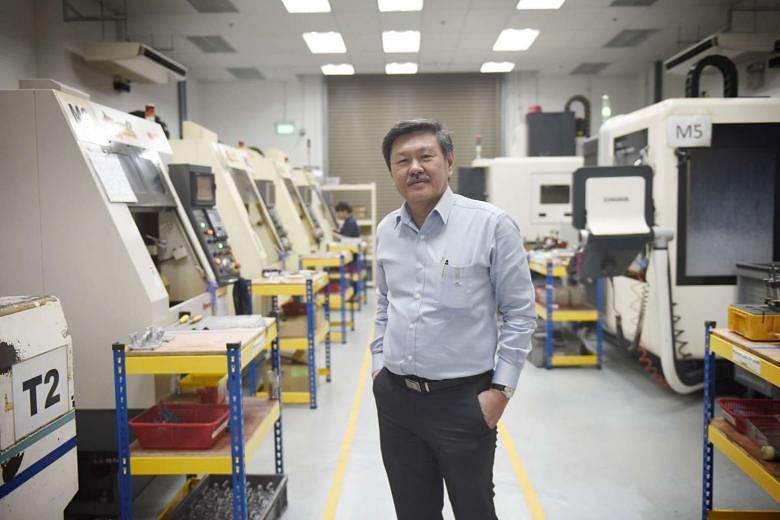Q How did Cragar begin?
A It all started with a dream that we both had - me and my partner, Mr C.Y. Phua. We have engineering backgrounds and wanted to start our own business in precision engineering, in August 1990.
We started with just two computerised numerical control (CNC) machines. In the beginning, we did machining for hard-disk drives and parts for automation machines such as photocopying machines.
Along the way, we have changed, investing in multi-tasking and higher-end machines, as the trend in the industry is moving towards high- precision work.
We now have 25 machines.
Q What was the challenge you faced that prompted you to think harder about innovation?
A For CNC machining there are a lot of parameters to adjust, for example, the speed and feed rate that you want. Then there are different materials - steel, stainless steel, aluminium, glass, plastic - that can be used on the machine. Each material has a different hardness.
We can, in theory, learn how to calculate the right parameters for the machine to produce the product and finishing you want in the amount of time you want. But in reality, it is more complicated.
We had been voicing out about this problem to the researchers at the Singapore Institute of Manufacturing Technology (SIMTech) for many years, and they worked on a solution for quite some time.
About three years ago, we participated in a Collaborative Industry Project with SIMTech on machining dynamics. It created a software that it said could solve our problem.
It conducted a few seminars for us to take a look at the software, see how it works and how efficient it is. That was when I told SIMTech I was interested.
We had to pay for the software but we received funding from Spring Singapore.
Q How does the software change how things are done at Cragar?
A SimTech's software is able to calculate parameters very fast. This helps our engineers to set the right parameters on our machines to get the desired output.
We don't have to estimate and guess any more. The software allows you to see what kind of quality of parts you would get if you set certain parameters on the machine.
So if you want a higher-quality part, you could get it but at the expense of finishing. Or you could have very good finishing but it will take more time. This makes it clearer for the engineers and there's no more trial and error. Once you set the parameters, you can expect this kind of quality from the product.
Q Does this mean you can also give customers a better idea of how much their products would cost and how long it would take to make products to their exact specifications?
A Yes, and it has improved the quality of our products and raised our productivity by at least 20 per cent. The amount of wastage has fallen too, which reduces our costs.
Furthermore, the software is customised for each company's usage. Each company has different machines which require different parameters. So the software can be adapted to work with machines of different makes.
After we got the software, we also signed up for SIMTech's Technology for Enterprise Capability Upgrading, or T-Up, programme. A researcher came to our factory and used the software on our machines to evaluate it and see how well it worked, and how it could be improved further.
He spent about three months here and helped customise the software to better suit our needs and also helped our staff become more accustomed to using it. That helped build up our engineers' confidence in using the software.
Q Where does Cragar go from here?
A We would like to further engage SIMTech and other government agencies to enhance our technology. In precision engineering, you have to keep up with technology and methodologies, and learn how to do things more efficiently.
Now the sector is talking about things like digital manufacturing, Industry 4.0. We may not be at that stage yet, but we have to keep moving in that direction. If we can't afford to adopt the technology now, can we at least move forward so that we can adopt it in future? We have to build the foundation.


